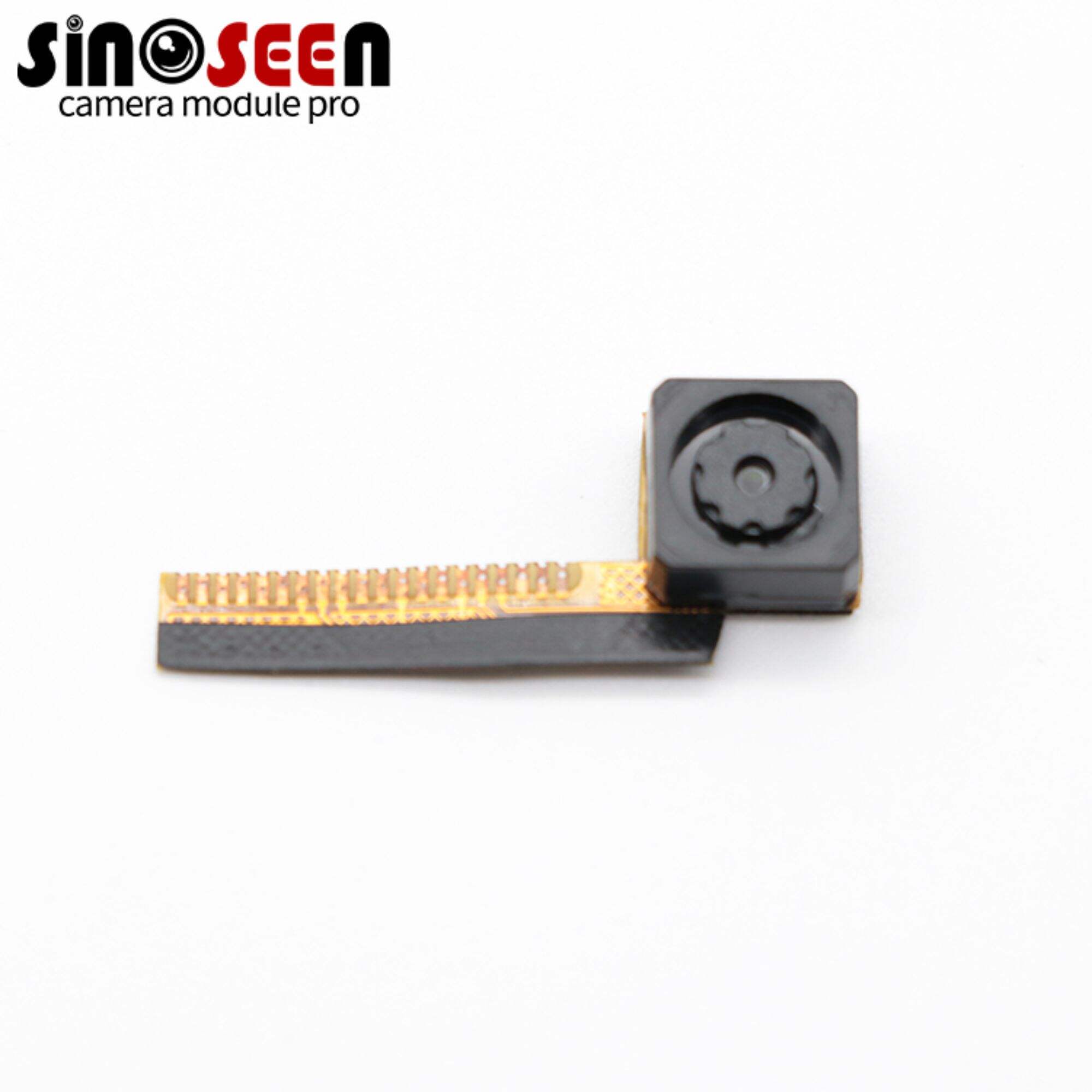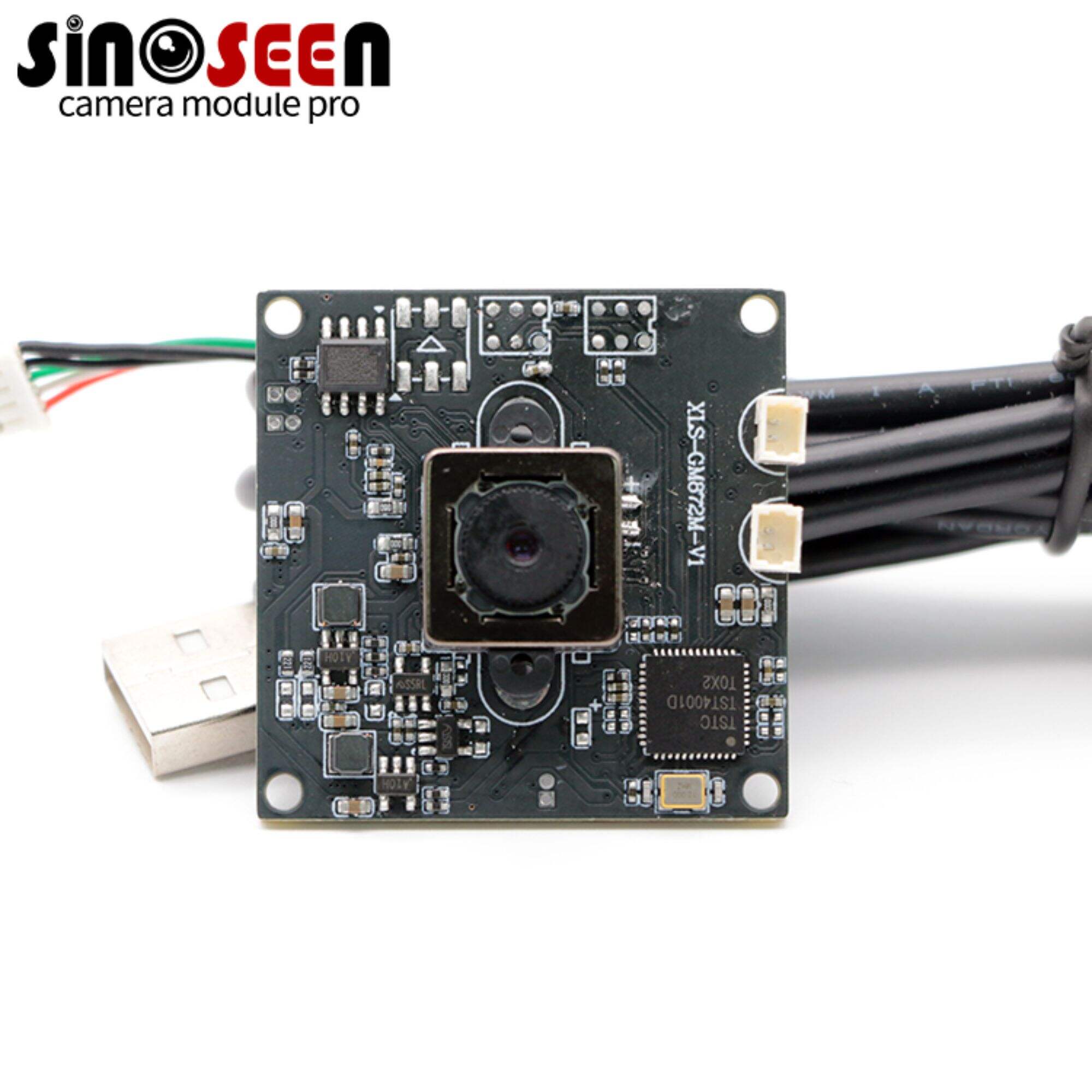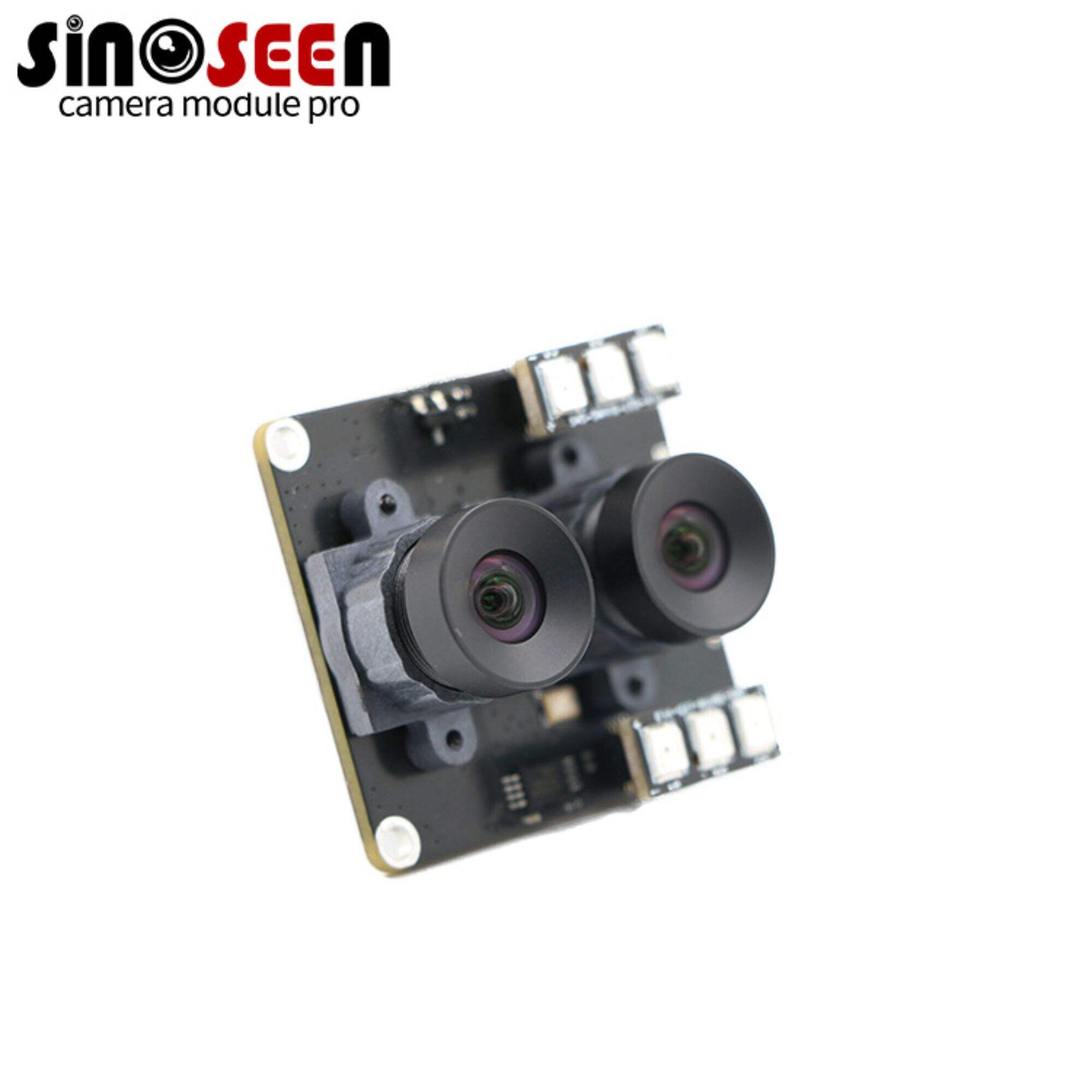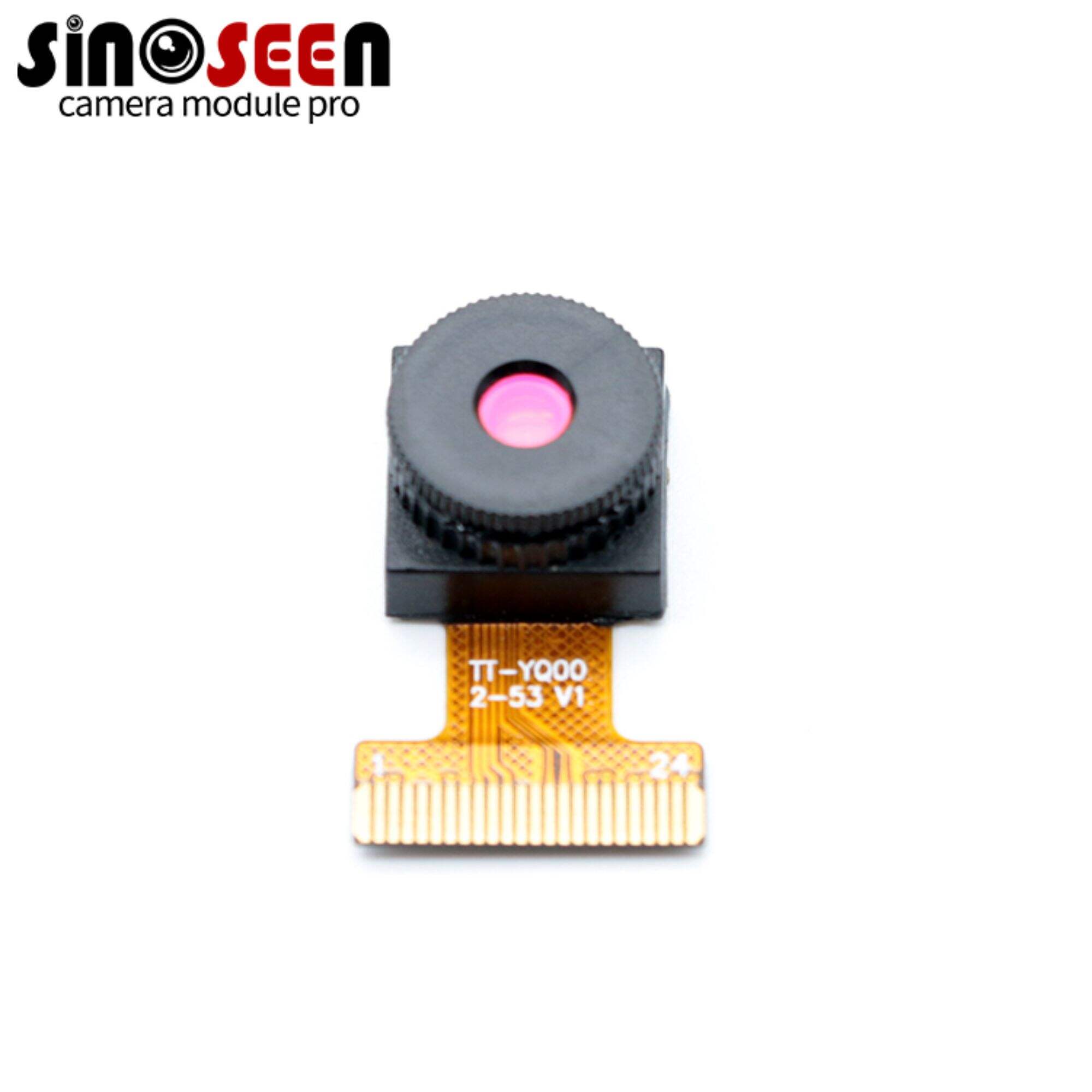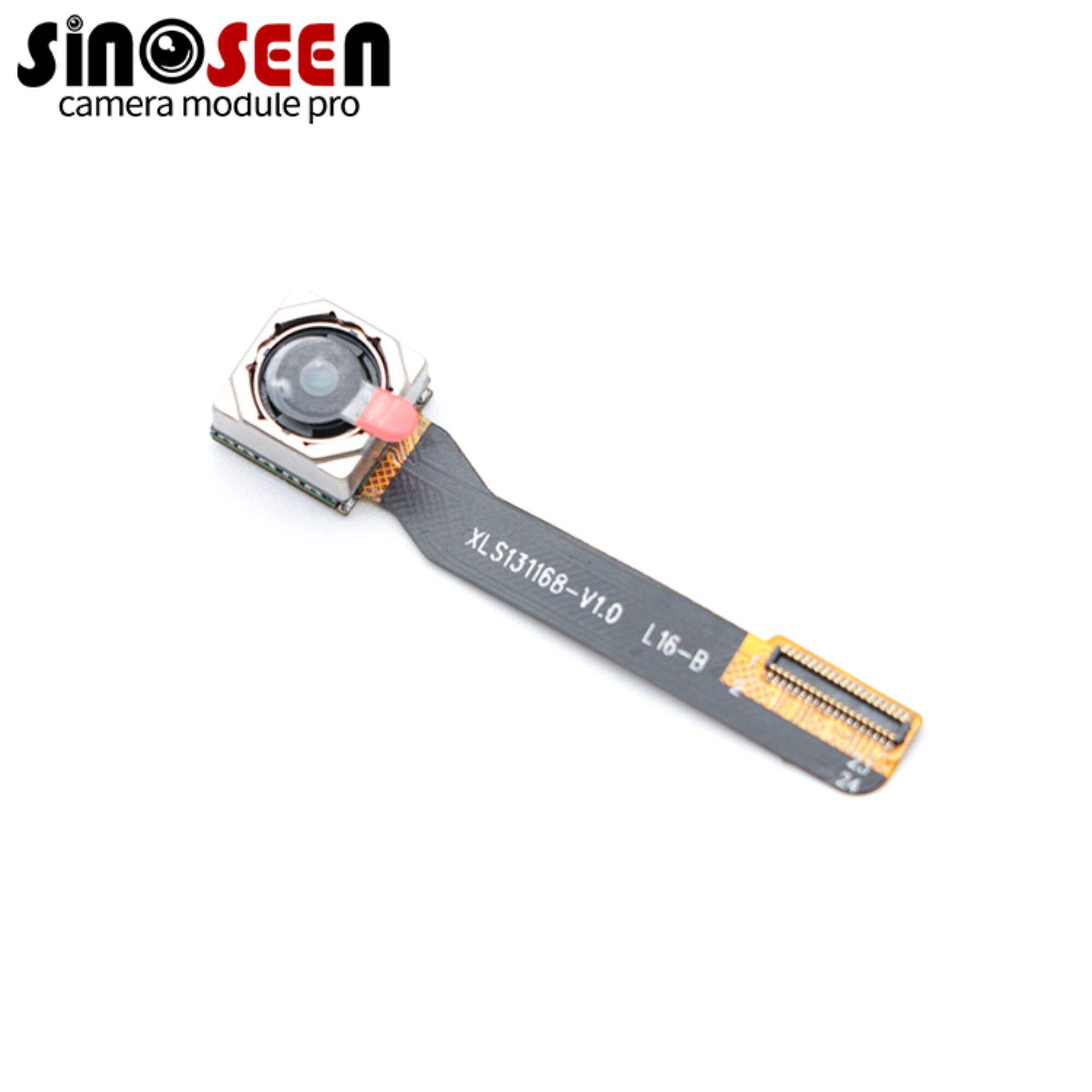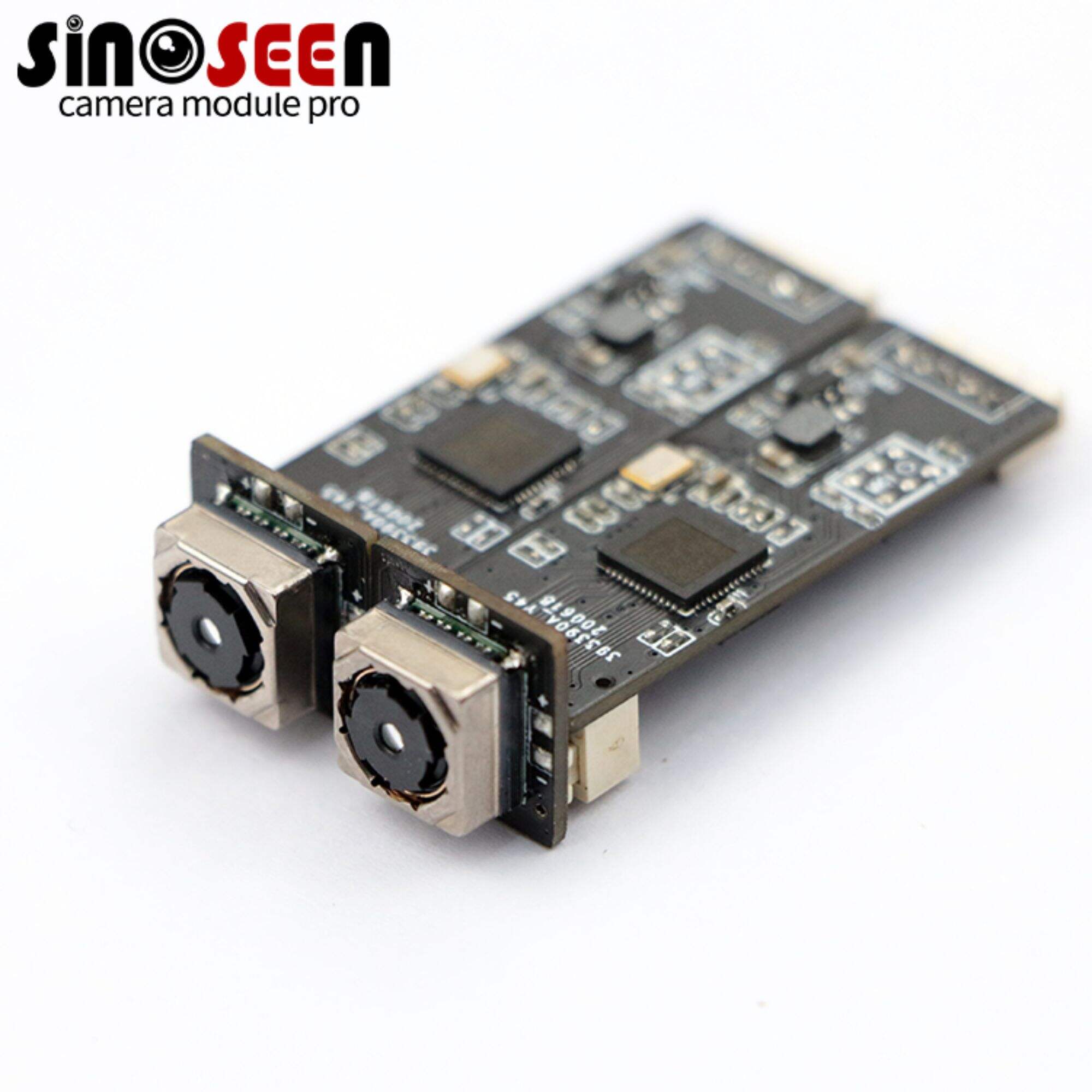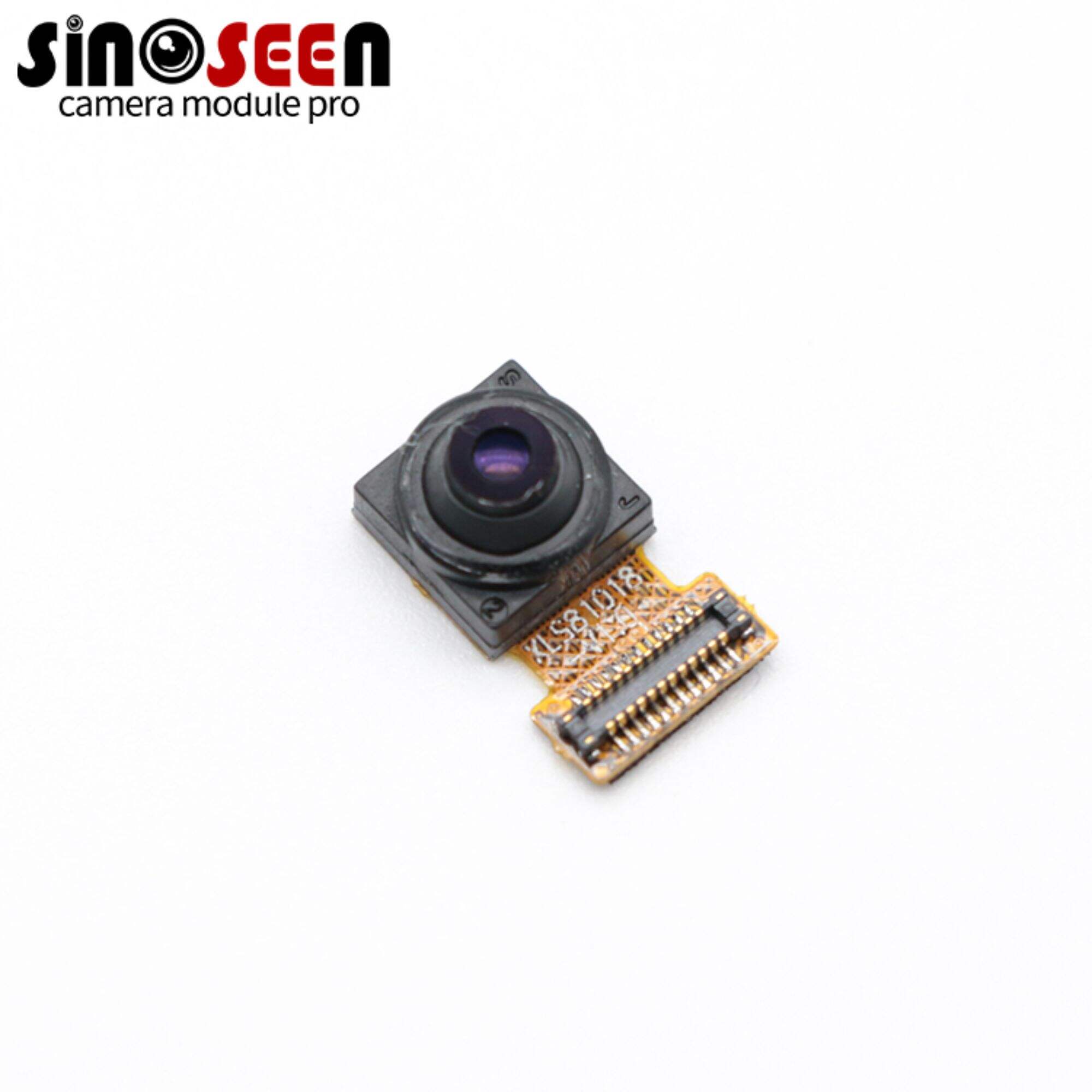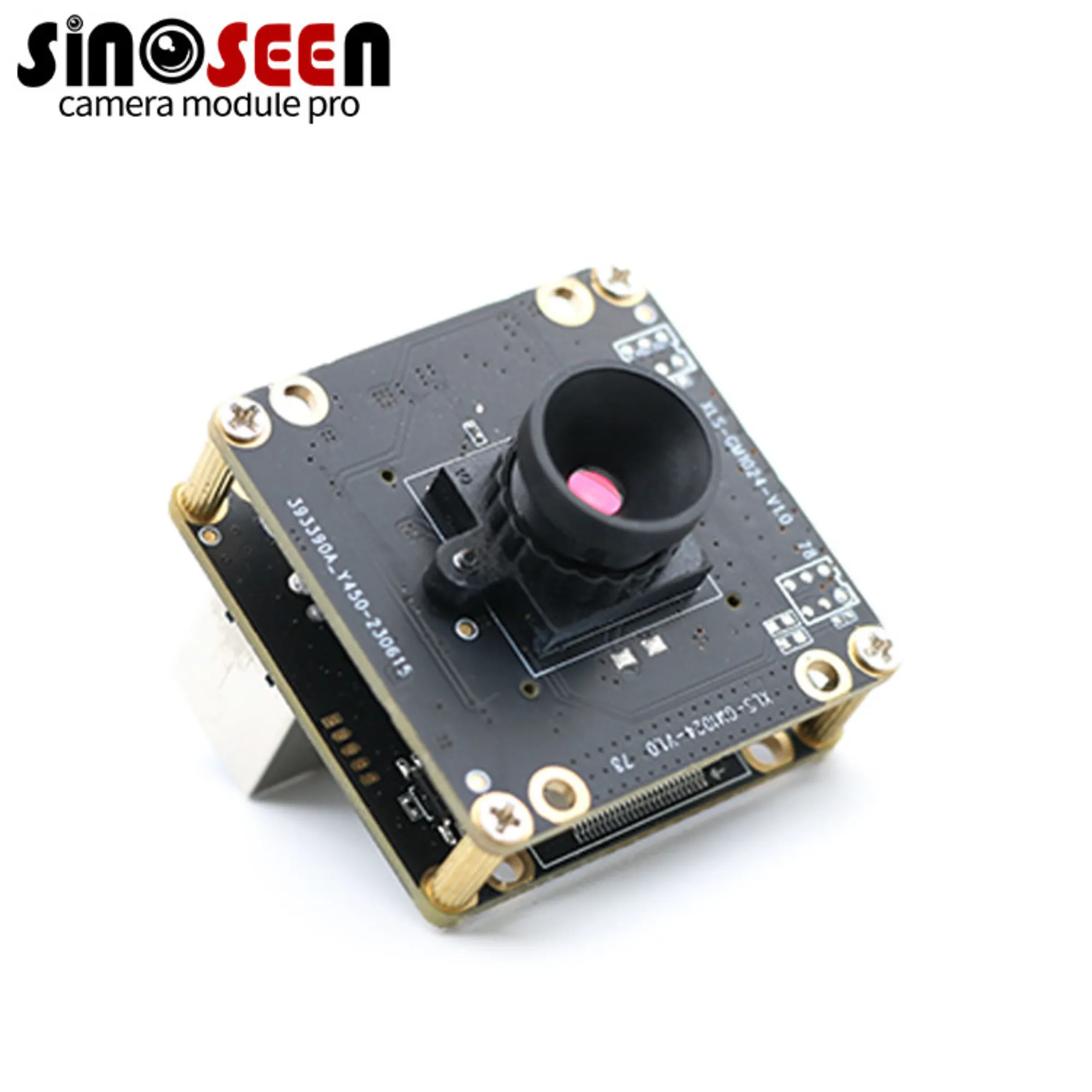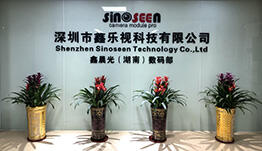کیمرہ نویز کیا ہے؟ یہ فوٹو گرافی میں کیسے اثر انداز ہوتی ہے؟
پیچیدہ دنیا میں ایمبیڈڈ وژن , عمدہ کارکردگی کے حصول کے لیے تصویری معیار کا ہونا ناگزیر ہے۔ تاہم، ایک نظری دشمن اکثر اس مقصد کو نقصان پہنچاتا ہے: کیمرہ نویز ۔ انجینئرز اور صنعت کے پیشہ ور افراد کے لیے، کیمرہ نویز کی گہری سمجھ رکھنا اہم ہے تاکہ مضبوط نظام کی تعمیر کی جا سکے۔ یہ مضمون وضاحت کرتا ہے کہ کیمرہ نویز کیا ہے ، میں جاننے کی کوشش کرتا ہے کہ آپ کے کیمرے میں شور کیوں ہوتی ہے ، اور وضاحت کرتا ہے کہ مسلسل فتوگرافی میں شور کا اثر ۔ ہم اس کے آغاز اور آپ کے لیے عملی کمی کی حکمت عملیوں کا جائزہ لیں گے کیمرہ ماڈیول .
کیمرہ نویز کیا ہے؟ نامطلوبہ سگنل
تو کیمرہ نویز کیا ہے؟ یہ کیمرے کے ذریعے پیدا کیے گئے برقی سگنل میں تصادفی، نامطلوبہ تغییرات کو ظاہر کرتا ہے تصویر حساس ۔ یہ تغییرات آپ کی لی گئی تصاویر میں دانیدار ٹیکسچر، دھبے یا رنگت والے پکسلز کے طور پر ظاہر ہوتی ہیں تصاویر ۔ یہ دراصل غلط معلومات ہے جو اصل تصویر کے ڈیٹا کو خراب کر دیتی ہے۔
کیمرہ نویز روشنی کو الیکٹریکل سگنل میں تبدیل کرنے کا ایک لازمی نتیجہ ہے۔ یہ اثر تصویری معیار تمام کیمرا ماڈیول ، کنزیومر ڈیوائسز سے لے کر ہائی اینڈ انڈسٹریل سسٹمز تک، خصوصاً مشکل حالات میں،

کیمرہ نویس کی تعریف : غیر ضروری سگنل کی رکاوٹ
یہ کیمرہ نویس کی تعریف وہ پکسل ویلیوز میں بے ترتیب تبدیلیوں کو خاص طور پر بیان کرتی ہے جو اصل سین انفارمیشن کی نمائندگی نہیں کرتیں۔ یہ رکاوٹ کیمرہ ماڈیول کے تصویر کے پائپ لائن کے اندر مختلف مراحل سے پیدا ہو سکتی ہے۔ بالآخر، یہ سگنل-ٹو-نویز ریشمو (SNR) .
اونچا کیمرہ نویز تصویر کی صفائی کو کم کر دیتی ہے۔ یہ آبجیکٹ ڈیٹیکشن یا پیمائش جیسی بعد کی تصویر کی پروسیسنگ الگورتھم کی درستگی کو بھی متاثر کرتی ہے۔ اس کے اسباب کو سمجھنا اس کے اثر کو کنٹرول کرنے کی کلید ہے۔
کیمرے میں شور : یہ کیوں ہوتا ہے
سوال، " میرا کیمرہ شور کیوں کرتا ہے؟ "، کیمرے میں شور کے متعدد ذرائع کی طرف اشارہ کرتا ہے کیمرے میں شور ، جن میں سے ہر ایک تصویر کی کوالٹی کو خراب کرنے میں حصہ ڈالتا ہے۔ یہ فزکس اور الیکٹرانکس کے مابین ایک پیچیدہ کھیل ہے۔
حرارتی شور
حرارتی شور الیکٹرانس کی حرکتِ تصادفی کی وجہ سے پیدا ہوتا ہے جو کیمرے کے تصویر حساس اور مربوط سرکٹری میں گرمی کی وجہ سے پیدا ہوتی ہے۔ زیادہ درجہ حرارت اس شور کو کافی حد تک بڑھا دیتا ہے۔ اسی لیے سائنسی یا طویل نمائش والے کیمرے میں اکثر کولنگ سسٹمز کا استعمال کیا جاتا ہے۔ کیمرا ماڈیول .
ریڈ نویز
جب کسی فوٹو سائٹ سے آنے والے اینالاگ سگنل کو ڈیجیٹل ویلیو میں تبدیل کیا جاتا ہے تو ریڈ نویز پیدا ہوتی ہے۔ اس میں تقویت اور اینالاگ سے ڈیجیٹل تبدیلی (ADC) شامل ہے۔ ان سرکٹس میں ناقصیاں بے ترتیب تبدیلیاں پیدا کر دیتی ہیں، خصوصاً بہت کم روشنی میں نمایاں ہوتی ہیں۔
فوتون شاٹ نویز
فوتون شاٹ نویز بنیادی اور اجتنابی ہے، روشنی کی جُزْوی نوعیت سے نکلتی ہے۔ فوتون سینسر پر بے ترتیب پہنچتے ہیں۔ یکساں روشنی کے باوجود، ہر پکسل پر پڑنے والے فوتون کی تعداد میں تھوڑا فرق ہوتا ہے، جس سے لازمی طور پر نویز پیدا ہوتی ہے۔ کم روشنی کی حالت میں جب کم فوتون دستیاب ہوتے ہیں، یہ نویز زیادہ نمایاں ہوتی ہے۔
ڈارک کرنٹ نویز
حتیٰ کہ جب سینسر پر روشنی نہیں پڑ رہی ہوتی، توانائی حرارت کی وجہ سے ایک چھوٹی سی کرنٹ (ڈارک کرنٹ) پیدا ہو سکتی ہے۔ یہ پکسلز کے درمیان بے ترتیب مختلف ہوتی ہے اور خصوصاً طویل قطعات یا زیادہ درجہ حرارت پر نویز میں اضافہ کرتی ہے۔
یہ مجموعی نویز کے ذرائع وضاحت کرتے ہیں آپ کے کیمرے میں شور کیوں ہوتی ہے , ظاہری طور پر مثالی حالت میں بھی، لیکن ان کے اثرات روشنی اور سیٹنگز کے مطابق کافی حد تک مختلف ہوتے ہیں۔
کیمرے کے شٹر کی آواز : آواز کی ایک مختلف قسم
لفظ " کیمرے کے شٹر کی آواز " عموماً اس سنائی دینے والی مکینیکل شٹر کی آواز کی طرف اشارہ کرتا ہے جب تصویر کھینچی جاتی ہے، جو DSLRs میں عام ہے۔ یہ آواز الگ ہوتی ہے بصری کیمرہ نویز (دھندلا، ٹھوں کے نشان) جو تصویر کی فائل میں نظر آتے ہیں۔
میں ایمبیڈڈ وژن ، بہت سارے کیمرا ماڈیول مکینیکل اجزاء کے بغیر الیکٹرانک گلوبل یا رولنگ شٹرز کا استعمال کرتے ہیں۔ اگرچہ ان سے "شٹر کی آواز" سنائی نہیں دیتی، لیکن پھر بھی یہ تصویر کی آواز ریڈ-آؤٹ عمل کے ذریعے اس میں حصہ لیتے ہیں۔ یہ سنائی دینے والی آواز اور تصویر کے نقصان میں فرق کرنا بہت ضروری ہے۔

یہ فتوگرافی میں شور کا اثر اور ویژن سسٹمز
یہ فتوگرافی میں شور کا اثر اور ایمبیڈڈ وژن سسٹمز میں شور کا اثر یونیورسلاً مضر ہوتا ہے تصویری معیار اور بعد کے تجزیے پر۔ یہ تفصیلات کو چھپاتا ہے، رنگوں کی درستگی کو کم کرتا ہے، اور الگورتھم کی کارکردگی کو متاثر کرتا ہے۔
نامعلوم روشنی میں، شور دانہ داری کے طور پر ظاہر ہوتا ہے، جس سے تیزی اور وضاحت کم ہوتی ہے۔ بہت کم روشنی میں، یہ تصویر کو تقریباً غیر استعمال کے قابل بنا سکتا ہے۔ مشین وژن ، شور سے پیمائش، آبجیکٹ ڈیٹیکشن، اور پیٹرن ریکوگنیشن کی درستگی متاثر ہوتی ہے۔ ایک شور والی تصویر غلط مثبت نتائج، غائب خامیاں، یا غیر مستحکم ٹریکنگ کا سبب بن سکتی ہے۔ یہ اعلی درستگی اور قابل اعتمادیت کی ضرورت والے اطلاقات میں ایک اہم پریشانی کا مقام ہے۔
کم کرنے کی حکمت عملیاں کیمرہ نویز
کو ختم کرنا کیمرہ نویز کی طرح ناممکن ہے اس کے باوجود اس کے اثر کو موثر انداز میں کم کیا جا سکتا ہے۔
-
روشنی کی سطح میں اضافہ کریں: سب سے مؤثر طریقہ۔ زیادہ روشنی کا مطلب زیادہ سگنل-ٹو-نویز تناسب ہے، کیونکہ فوٹونز اندرونی شور کو غلط ثابت کر دیتے ہیں۔ اپنے منظر میں روشنی کو بہتر بنائیں۔
-
ایکسپوژر ٹائم کو بہتر بنائیں: موشن بلر کے بغیر ممکنہ طویل ترین ایکسپوژر ٹائم استعمال کریں۔ یہ پکسلز کو مزید روشنی جمع کرنے کی اجازت دیتا ہے، جس سے سگنل بہتر ہوتا ہے۔
-
گین/آئی ایس او کو کنٹرول کریں: سینسر گین (یا آئی ایس او) کو ممکنہ حد تک کم رکھیں۔ زیادہ گین دونوں سگنل اور شور کو بڑھاتی ہے، جس سے سنویے سینل ریشیو .
-
درجہ حرارت کا انتظام کریں: ٹھنڈا کریں تصویر حساس ۔ ہائی اینڈ انڈسٹریل یا سائنسی کیمرا ماڈیول کے لیے، تھرموالیکٹرک (ٹی ای سی) کولنگ یا پھر لوہے کی نائٹروجن کولنگ تھرمل اور ڈارک کرنٹ نویز کو بہت کم کر سکتی ہے۔
-
نویز کم کرنے کے الخوارزمیات کا استعمال کریں: کثیر جدید کیمرا ماڈیول اور تصویر کی پراسیسنگ لائبریریز میں نویز کم کرنے کے الگورتھم شامل ہوتے ہیں۔ یہ بے ترتیب نویز کو موثر انداز میں ہموار کر سکتے ہیں لیکن کبھی کبھی تفصیل کی قربانی دے سکتے ہیں۔
-
صحیح سینسر کا انتخاب کریں: منتخب کریں کیمرا ماڈیول بڑے سائز کے ساتھ پکسل کے سائز یا خصوصی کم نویز والے سینسر کی آرکیٹیکچر۔ بڑے پکسلس میں مجموعی طور پر زیادہ روشنی جمع ہوتی ہے، جس سے ایس این آر بہتر ہوتا ہے۔ بیک لائٹ (بی ایس آئی) سینسرز بھی روشنی جمع کرنے کی کارکردگی کو بڑھاتے ہیں۔
ان عوامل پر غور کرتے ہوئے، انجینئرز کارآمد اصلاحات کر سکتے ہیں تصویری معیار چیلنجنگ ماحول میں بھی۔
مدیریت کیمرہ نویز کاروباری شعبوں میں
مؤثر کیمرہ نویز کارکردگی کے قابل بھروسہ ہونے کے لیے انتظامیہ انتہائی اہم ہے۔ ایمبیڈڈ وژن اہم اطلاقات میں شامل سسٹمز۔
صنعتی خودکاری اور کوالٹی کنٹرول
میں مشین وژن ، شور دھیان کو معطل کر سکتا ہے۔ مثال کے طور پر، اجزاء پر مائیکرو دراڑوں کی جانچ کے لیے انتہائی صاف تصاویر ۔ شور کی بلند سطح غلط مسترد کرنے یا خامیوں سے چوکنا کا سبب بنتی ہے۔ انجینئرز بڑھتی ہوئی تعداد میں منتخب کرتے ہیں کیمرا ماڈیول کم پڑھنے والے شور کے ساتھ اور سٹیج روشنی کو بہتر بناتے ہیں تاکہ جانچ کے نتائج کی درستگی اور قابل بھروسہ ہونا یقینی بنایا جا سکے، جس کا براہ راست اثر تیاری کی کارکردگی اور مصنوع کی معیت پر ہوتا ہے۔ عالمی مشین وژن مارکیٹ، جو تصویر کی معیت پر شدید متاثر ہوتی ہے، کو 2029 تک بڑھ کر 18.2 ارب امریکی ڈالر تک پہنچنے کی پیش گوئی کی گئی ہے۔ (مارکیٹ اینڈ مارکیٹس، 2024)، شور کنٹرول کی اہمیت کو اجاگر کرتے ہوئے۔
طبی امیجنگ
طبی کیمرا ماڈیول ، جیسے انڈوسکوپس یا سرجری مائیکروسکوپس میں، شور تشخیصی اہم تفصیلات کو چھپا سکتا ہے۔ مثال کے طور پر، تیزی سے تبدیل ہونے والے ٹشو کی تلاش یا کم تکلیف دہ سرجری کے دوران درست راستہ چلنے کے لیے صاف، معیاری تصاویر . تشخیص درست اور مریض کی حفاظت کے لیے کم شور کی سطح بہت اہم ہے۔ طبی تصویر کشی کے شعبے میں زیادہ سے زیادہ حساسیت اور کم شور خصوصیات کے حامل سینسرز پر زور دیا جاتا ہے۔ کوانٹم کارکردگی اور کم شور خصوصیات۔
نگرانی اور حفاظت
راستہ مینیج کرنا کیمرہ نویز ایک بڑا چیلنج ہے۔ زیادہ شور فوٹیج کو دانہ دار بنا دیتا ہے، شناخت کو مشکل یا ناممکن بنا دیتا ہے۔ کیمرا ماڈیول کم روشنی میں کام کرنے کے لیے تیار کیمرے تصاویر اور عملی معلومات، یہاں تک کہ تقریباً تاریکی میں بھی۔
خودکار گاڑیاں اور خودمختار گاڑیاں
ADAS اور خودمختار ڈرائیونگ میں، کیمرا ماڈیول وسیع روشنی کی حالت میں کام کرتے ہیں، تیز دن کی روشنی سے لے کر سیاہ سڑکوں تک۔ شور آبجیکٹ ڈیٹیکشن، لین کیپنگ، اور پیدل چلنے والوں کی پہچان کی قابل اعتمادگی کو متاثر کرتا ہے۔ سسٹم میں اکثر متعدد کیمرے (کم شور NIR سینسرز سمیت) اور پیچیدہ سافٹ ویئر نویز کم کرنے کے لیے استعمال کیے جاتے ہیں تاکہ ماحول کی روشنی کی حالت کے باوجود مستحکم کارکردگی یقینی بنائی جا سکے۔ خودکار کیمرہ مارکیٹ، جس کا تخمینہ 2028 تک 14.5 ارب امریکی ڈالر تک پہنچنے کا ہے۔ USD 14.5 ارب 2028 تک (موردور انٹیلی جنس، 2023)، مسلسل شور کی بہترین حصولیاب حل کی تلاش میں رہتا ہے۔
خاتمہ: ماہر ہونا کیمرہ نویز زیادہ واضح نظروں کے لیے
کیمرہ نویز کا ایک لاوارث حقیقت ہے ایمبیڈڈ وژن لیکن اس کے اثر کو مؤثر طریقے سے سنبھالا جا سکتا ہے۔ کو سمجھنا کیمرہ نویز کیا ہے ، کے مختلف ذرائع کیمرے میں شور سسٹمز، اور گہری فتوگرافی میں شور کا اثر انجینئروں کو بااختیار بناتا ہے۔ مناسب کا انتخاب کرکے کیمرا ماڈیول ، روشنی کو بہتر بنانا، اور مؤثر شور کم کرنے کی حکمت عملیوں کو نافذ کرنا، آپ یہ یقینی بناسکتے ہیں کہ آپ کا دیکھنے والا سسٹم وضاحت، قابل بھروسہ کے ساتھ تصویری معیار کامیابی کے لیے ضروری ہے۔ شور کنٹرول پر قابو پانا آپ کے اگلے ویژن پروجیکٹ کی پوری صلاحیت کو کھولنے کی کلید ہے۔
اپنے منصوبے کو بہتر بنانے کے لیے تیار ہیں ایمبیڈڈ وژن شور میں کمی کے ساتھ شاندار تصویری معیار ? ہمارے ماہرین سے رائے لیں چننے اور ضم کرنے پر کیمرا ماڈیول مشکل اطلاقات کے لیے تیار کردہ

 EN
EN
 AR
AR
 DA
DA
 NL
NL
 FI
FI
 FR
FR
 DE
DE
 EL
EL
 HI
HI
 IT
IT
 JA
JA
 KO
KO
 NO
NO
 PL
PL
 PT
PT
 RO
RO
 RU
RU
 ES
ES
 SV
SV
 TL
TL
 IW
IW
 ID
ID
 SR
SR
 VI
VI
 HU
HU
 TH
TH
 TR
TR
 FA
FA
 MS
MS
 IS
IS
 AZ
AZ
 UR
UR
 BN
BN
 HA
HA
 LO
LO
 MR
MR
 MN
MN
 PA
PA
 MY
MY
 SD
SD

